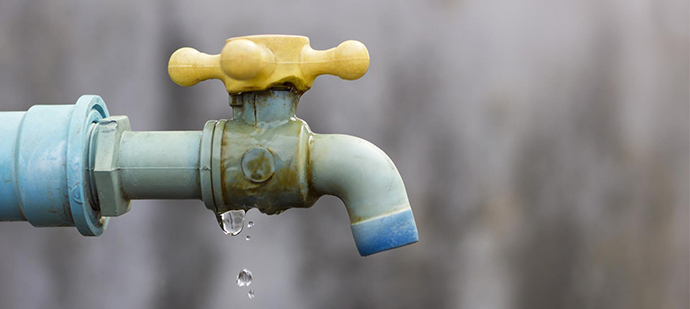We've come across this article involving Leaking water lines directly below on the net and accepted it made perfect sense to share it with you in this article.

Early detection of dripping water lines can mitigate a possible disaster. Some little water leaks might not be noticeable.
1. Analyze the Water Meter
Every house has a water meter. Inspecting it is a proven way that aids you discover leaks. For starters, switch off all the water sources. Make sure no one will purge, use the faucet, shower, run the cleaning machine or dishwashing machine. From there, most likely to the meter and watch if it will transform. Given that nobody is utilizing it, there need to be no motions. That suggests a fast-moving leakage if it relocates. Also, if you find no changes, wait a hr or two as well as examine back once again. This indicates you might have a slow-moving leak that could even be underground.
2. Check Water Consumption
If you spot unexpected modifications, in spite of your intake being the same, it means that you have leakages in your plumbing system. An abrupt spike in your expense suggests a fast-moving leak.
On the other hand, a steady increase each month, despite the very same routines, reveals you have a slow leakage that's likewise slowly rising. Call a plumber to extensively inspect your building, specifically if you really feel a warm location on your floor with piping underneath.
3. Do a Food Coloring Examination
When it involves water usage, 30% comes from toilets. Test to see if they are running effectively. Decrease specks of food shade in the storage tank and wait 10 mins. There's a leak between the storage tank and dish if the color in some way infiltrates your bowl throughout that time without flushing.
4. Asses Exterior Lines
Do not forget to inspect your outdoor water lines also. Examination spigots by connecting a garden pipe. Should water permeate out of the connection, you have a loosened rubber gasket. Replace this as well as ensure all connections are limited. If you've obtained a lawn sprinkler, it will certainly aid get it skillfully analyzed and also maintained each year. One tiny leak can throw away tons of water as well as increase your water bill.
5. Check and also Analyze the Circumstance
House owners must make it a behavior to check under the sink counters and also inside cabinets for any bad odor or mold growth. These 2 warnings show a leakage so punctual focus is required. Doing routine evaluations, even bi-annually, can save you from a major issue.
A lot more significantly, if you know your residence is currently old, maintain a watchful eye on your heaters, tubes, pipes and so on. Check for stainings and weakening as most pipes and also devices have a life expectancy. They will also naturally deteriorate due to wear and tear. If you believe dripping water lines in your plumbing system, don't wait for it to escalate. Call a professional plumber immediately so you don't wind up with a dreadful mess in your house.
Early detection of dripping water lines can reduce a prospective disaster. Some tiny water leakages may not be visible. Examining it is a proven method that helps you uncover leaks. One small leak can throw away bunches of water as well as spike your water expense.
If you suspect dripping water lines in your plumbing system, don't wait for it to rise.
WARNING SIGNS OF WATER LEAKAGE BEHIND THE WALL
PERSISTENT MUSTY ODORS
As water slowly drips from a leaky pipe inside the wall, flooring and sheetrock stay damp and develop an odor similar to wet cardboard. It generates a musty smell that can help you find hidden leaks.
MOLD IN UNUSUAL AREAS
Mold usually grows in wet areas like kitchens, baths and laundry rooms. If you spot the stuff on walls or baseboards in other rooms of the house, it’s a good indicator of undetected water leaks.
STAINS THAT GROW
When mold thrives around a leaky pipe, it sometimes takes hold on the inside surface of the affected wall. A growing stain on otherwise clean sheetrock is often your sign of a hidden plumbing problem.
PEELING OR BUBBLING WALLPAPER / PAINT
This clue is easy to miss in rooms that don’t get much use. When you see wallpaper separating along seams or paint bubbling or flaking off the wall, blame sheetrock that stays wet because of an undetected leak.
BUCKLED CEILINGS AND STAINED FLOORS
If ceilings or floors in bathrooms, kitchens or laundry areas develop structural problems, don’t rule out constant damp inside the walls. Wet sheetrock can affect adjacent framing, flooring and ceilings.
https://www.servicemasterbyzaba.com/blog/how-to-detect-water-leakage-in-walls/

As a keen person who reads on Detecting hidden plumbing leaks, I assumed sharing that excerpt was a good idea. Please take the time to share this blog entry if you liked it. Thank-you for taking the time to read it.